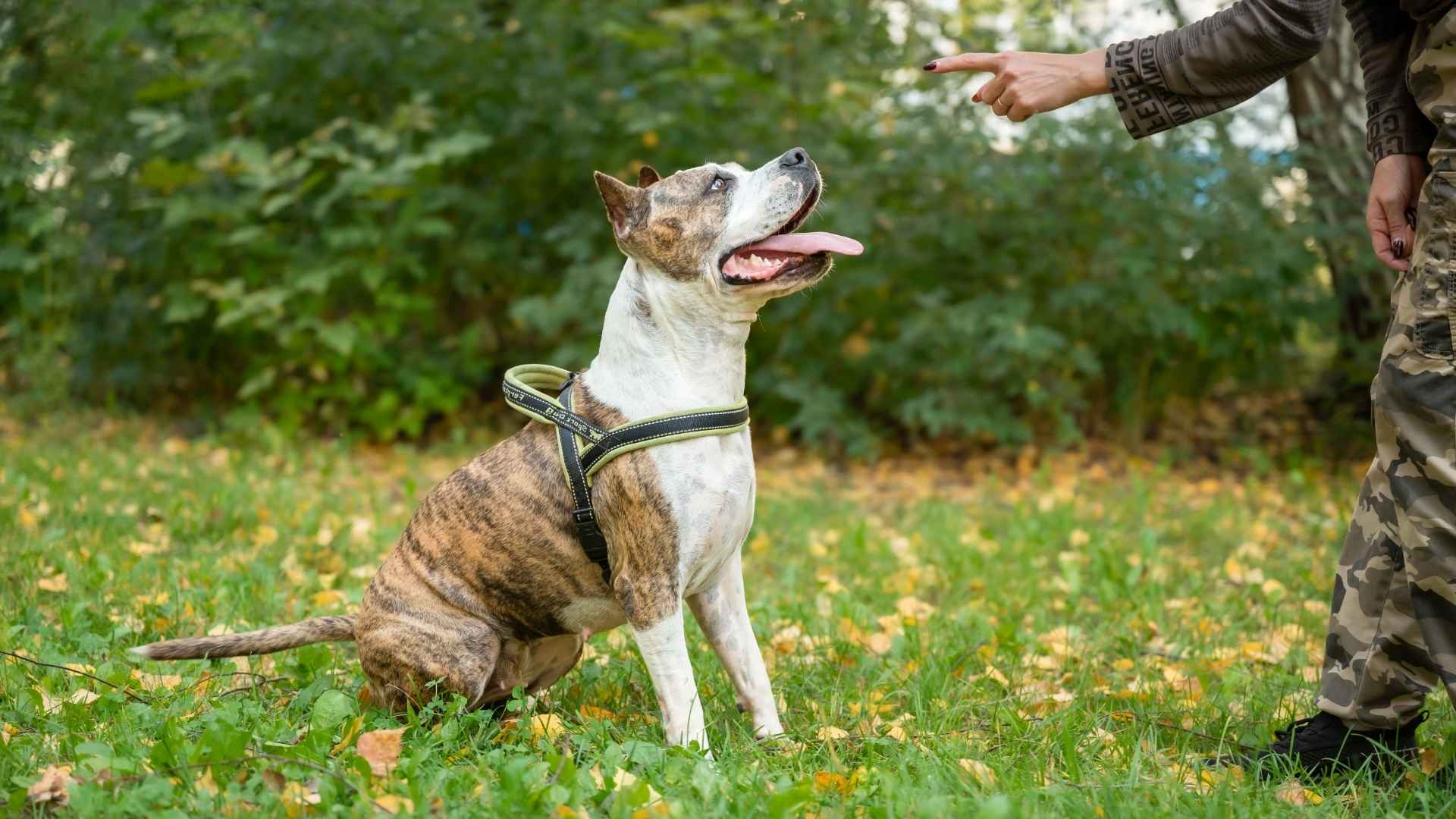Not all dogs are just pets—some are born for a purpose. Task-oriented breeds excel in security, rescue, and protection, making them essential partners in demanding roles. These dogs don’t just follow commands; they anticipate needs, react swiftly, and remain focused under pressure. Their intelligence, discipline, and unwavering loyalty set them apart.
Many people seek dogs that do more than offer companionship. Whether guarding homes, working in law enforcement, or assisting in rescue missions, these breeds thrive under structure. If you need a dog that’s reliable, trainable, and always ready for action, understanding their strengths is crucial. Their natural instincts and problem-solving abilities make them irreplaceable in challenging environments.
Selecting the right task-oriented breed means choosing a dog that aligns with your lifestyle. From protection to specialized work, these breeds excel in critical roles. Let’s explore which dogs are best suited for these demanding tasks.
Did you know? Many task-oriented dogs were originally bred for war, guarding ancient civilizations, and protecting soldiers on the battlefield. Their instincts remain strong today, making them some of the most disciplined working dogs in the world.
Task-Oriented Dog Breeds
1. Anatolian Shepherd
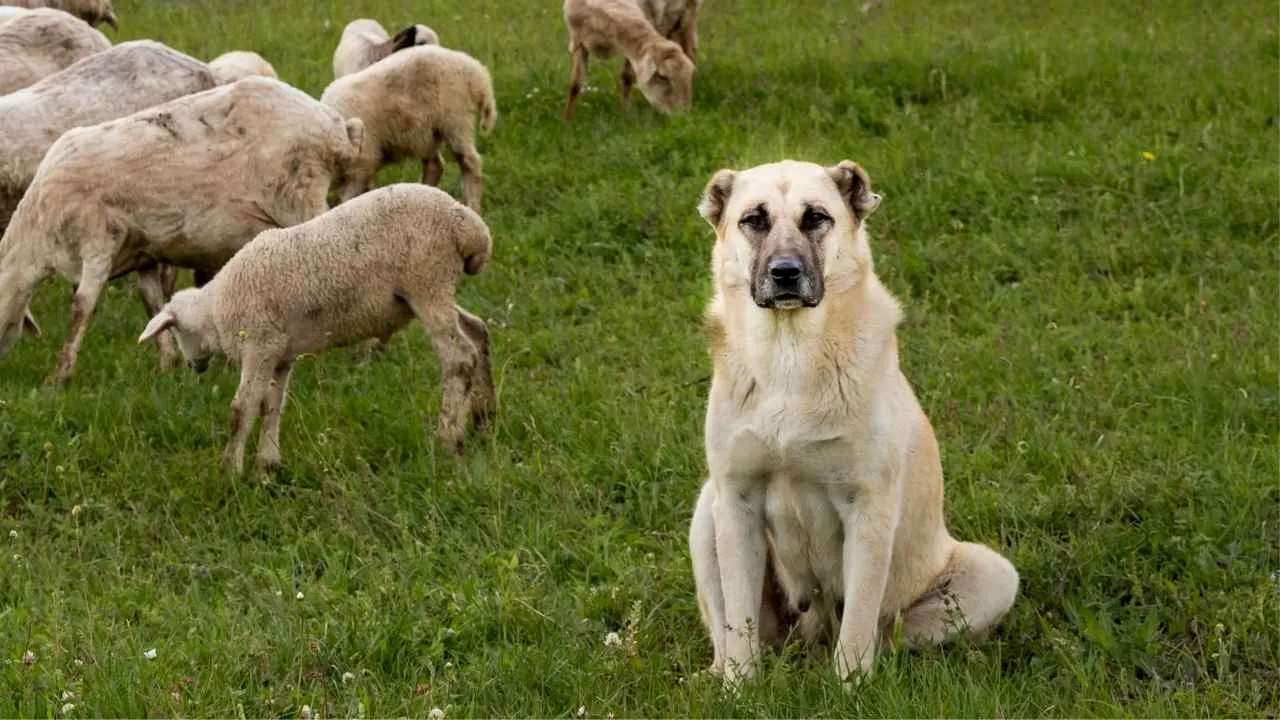
The Anatolian Shepherd is a powerhouse of instinct-driven work ethic. Bred for guarding livestock, it thrives in roles requiring independence and strong decision-making. Its unwavering focus and territorial awareness make it a formidable working breed with a natural ability to assess threats.
With a sturdy build and a thick coat, it adapts well to different environments. Its resilience against harsh weather conditions allows it to perform its guarding duties year-round. This breed is known for its endurance, making it a reliable choice for demanding tasks.
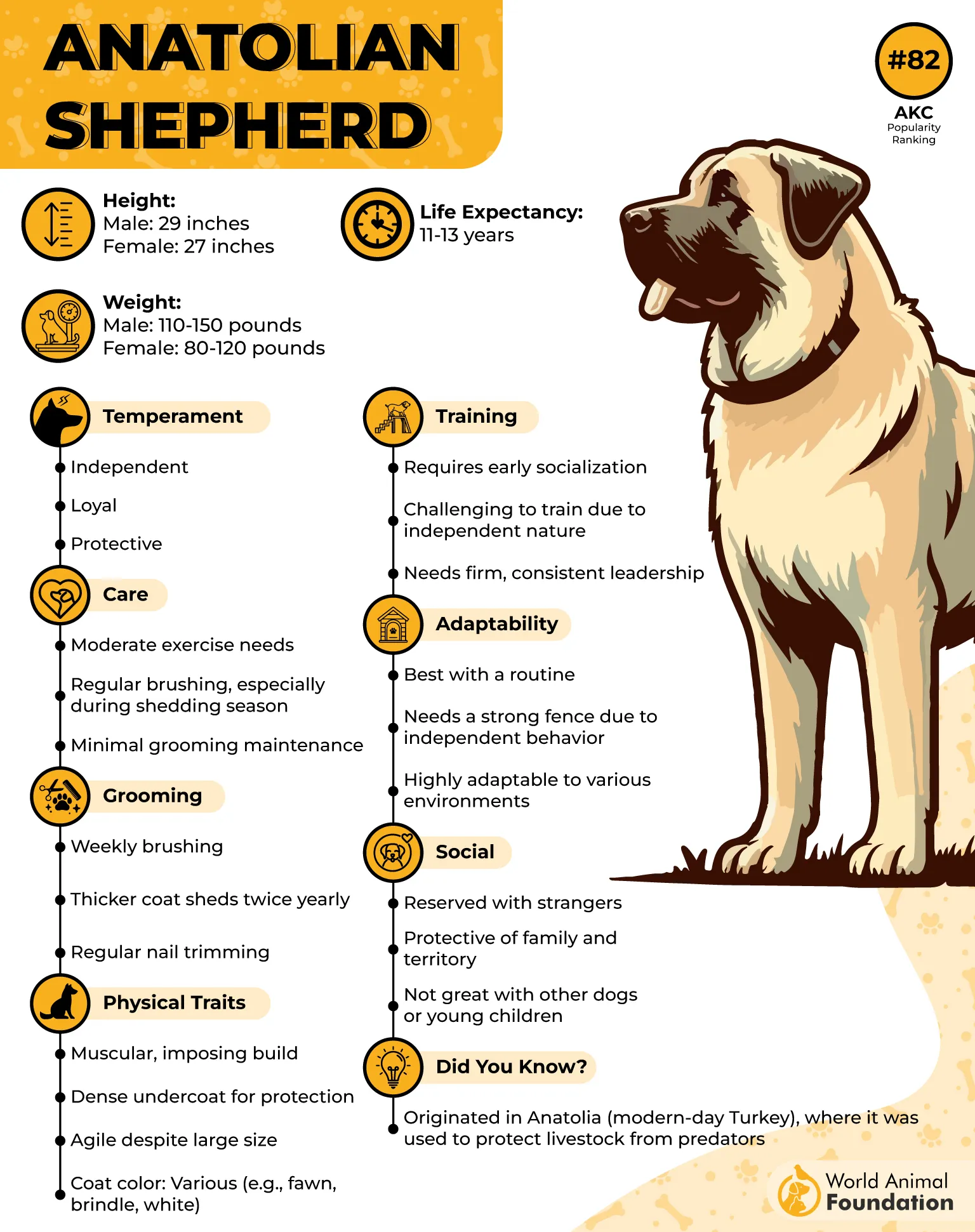
Socialization from an early age is essential to balance its protective nature. While it is not naturally inclined toward strangers, consistent exposure to various environments helps refine its ability to differentiate between threats and non-threats, improving its effectiveness in task-oriented roles.
Diet plays a significant role in maintaining the Anatolian Shepherd’s energy levels. A nutrient-rich diet supports its muscular frame and overall stamina. High-quality proteins and carefully managed portions ensure that they remain agile, responsive, and ready to handle physically demanding responsibilities.
According to the AKC, daily exercise is crucial for this breed’s mental and physical well-being. While it does not demand intense activity, structured tasks such as patrolling or supervised outdoor work keep it engaged. Without purpose-driven activity, it may develop stubborn tendencies.
Fun Fact
Anatolian Shepherds have been used to protect endangered cheetahs in Africa. Their presence reduces human-wildlife conflicts by keeping livestock safe, ultimately preventing retaliatory hunting of cheetahs by local farmers.
2. Boxer
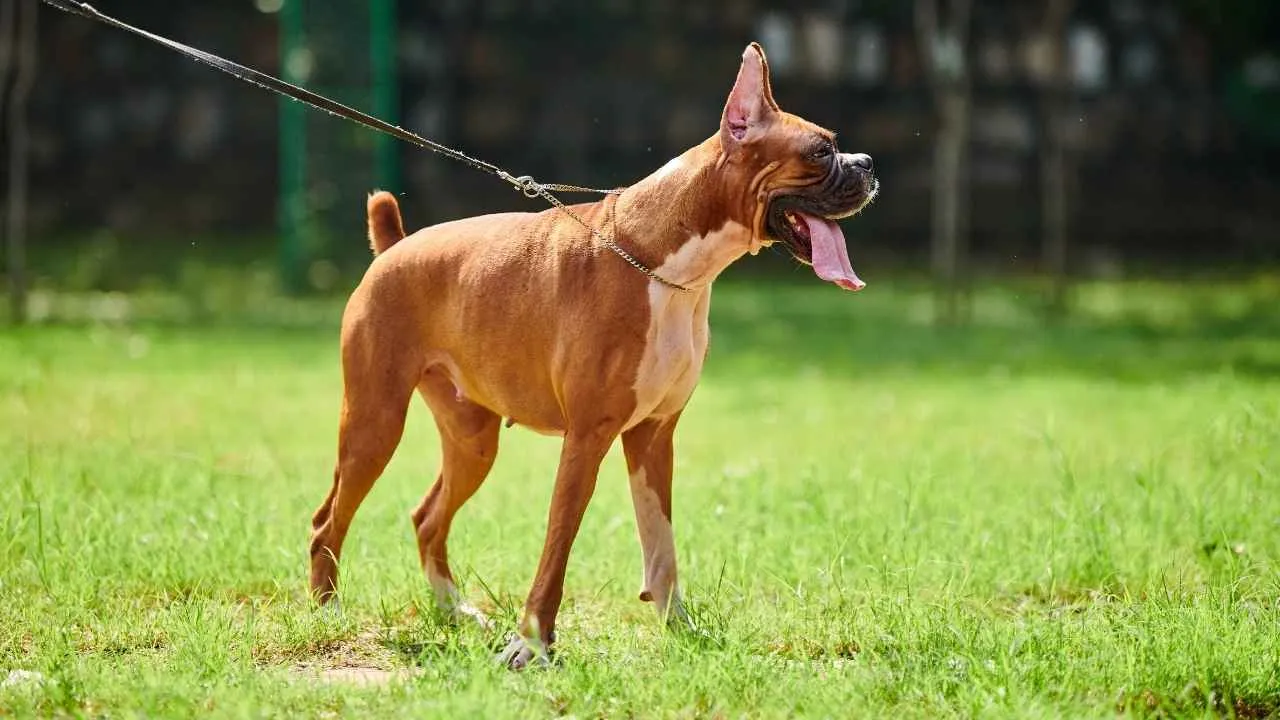
The Boxer is an energetic and determined breed with an impressive work ethic. Historically employed as a military and police dog, it possesses a keen ability to learn structured commands. Its enthusiasm and alertness make it a standout in task-oriented environments.
With a muscular physique and boundless energy, this breed thrives in physically engaging tasks. It requires consistent mental and physical challenges to maintain focus. Agility exercises, obedience training, and scent-based activities help sharpen its natural drive for structured work.
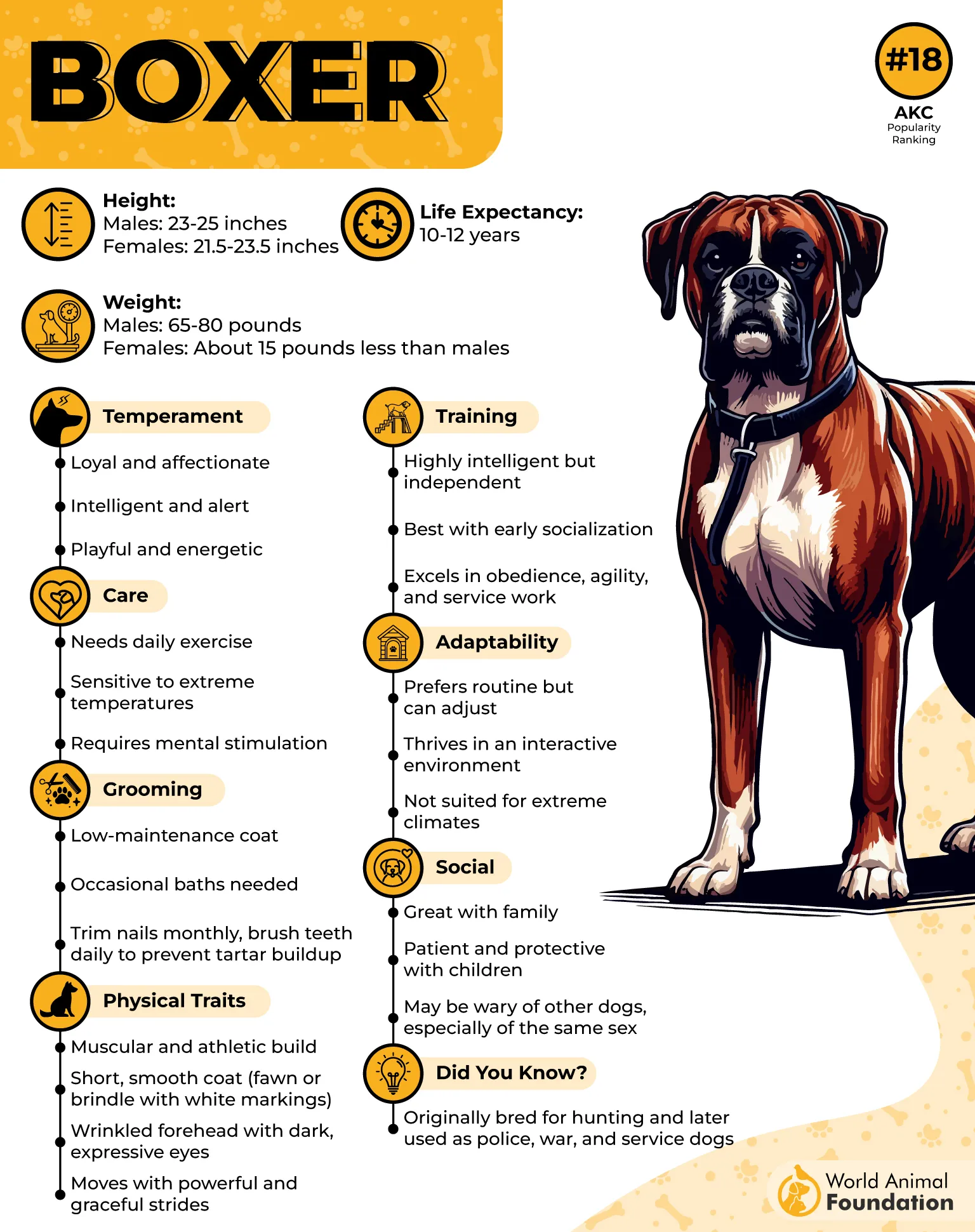
Boxers communicate through expressive body language, making them highly responsive to their handlers. Their observant nature allows them to excel in roles that demand keen situational awareness. Whether in search-and-rescue or protection work, their ability to read subtle cues is unmatched.
A well-balanced diet supports the Boxer’s high energy levels. Lean proteins, essential fatty acids, and nutrient-dense foods contribute to muscle development and endurance. Portion control and hydration play a significant role in maintaining physical health and stamina.
Regular, high-intensity exercise is necessary to keep this breed mentally and physically satisfied. Interactive training sessions, controlled socialization, and engaging activities prevent boredom. Without structured outlets, its energy may manifest in undesirable behaviors, reducing its task efficiency.
Fun Fact
Boxers earned their name from their playful habit of using their front paws to “box” when interacting. This natural tendency adds an entertaining element to their energetic personality, making them one of the most expressive working breeds.
3. Cane Corso
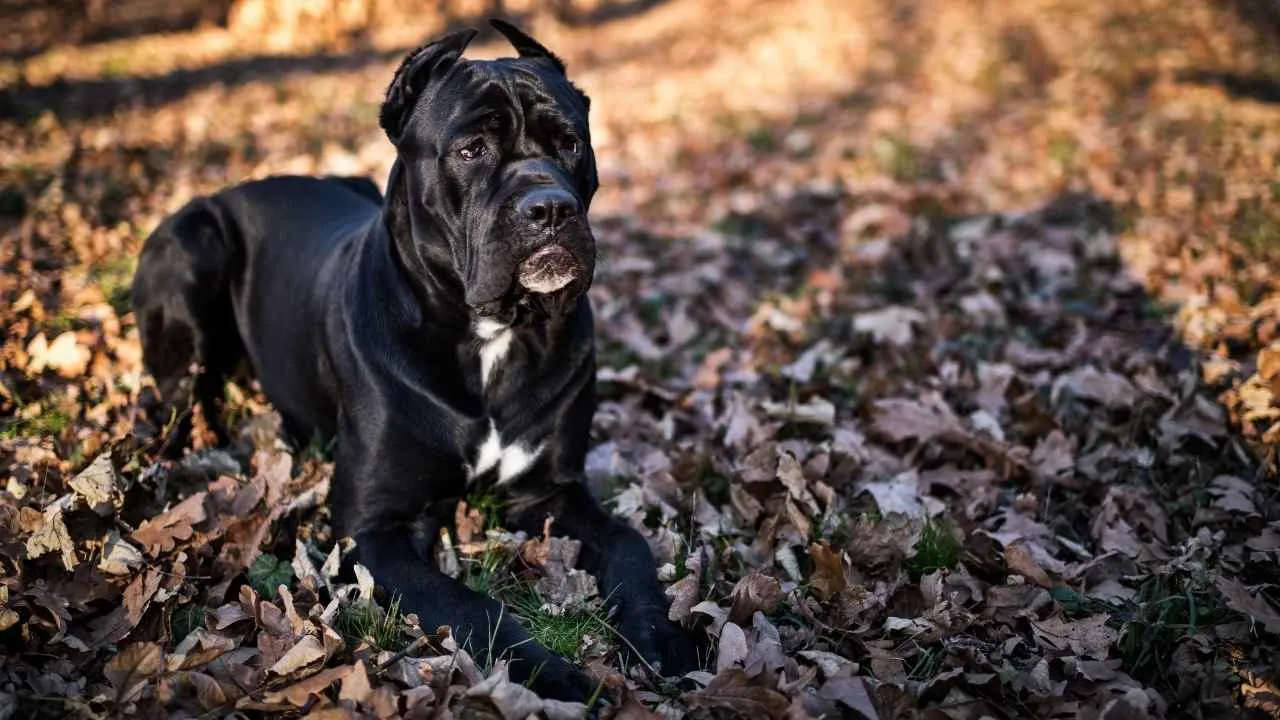
The Cane Corso is a breed built for duty. With origins as an Italian guardian and hunting dog, it possesses an unwavering sense of responsibility. Whether patrolling, tracking, or working in security, its natural confidence and intelligence make it an outstanding task-oriented breed.
With a commanding presence and powerful frame, the Cane Corso is an imposing figure. Its short, dense coat requires minimal upkeep, but regular care helps maintain healthy skin and a glossy finish. Routine checks ensure optimal coat condition and overall wellness.
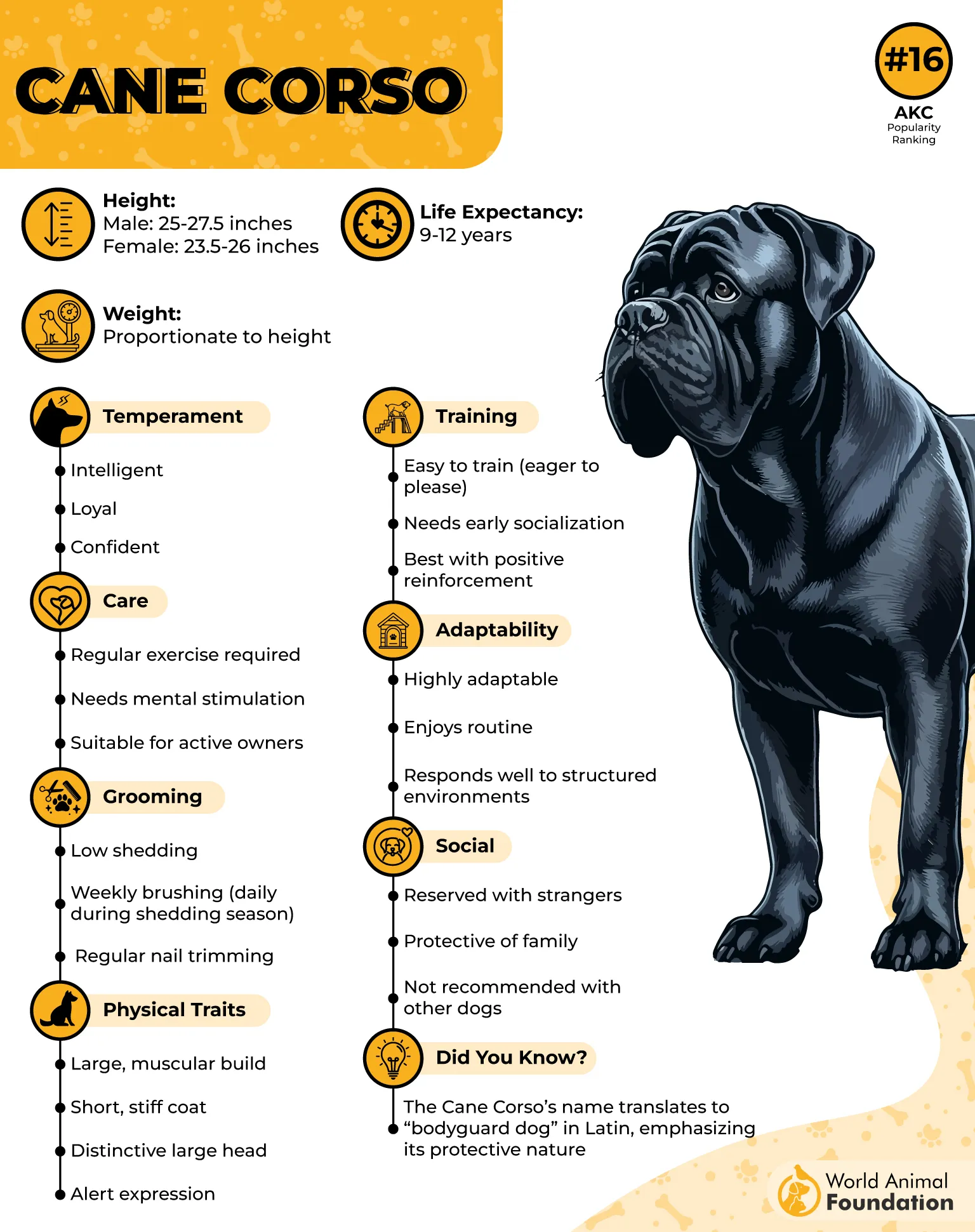
According to PetMD, this breed requires firm but fair training to harness its full potential. Clear leadership, structured reinforcement, and consistent commands shape its disciplined nature. When properly guided, its ability to retain complex instructions and execute tasks efficiently is remarkable.
A well-structured environment benefits the Cane Corso immensely. It thrives in settings where it has a defined role, whether in guarding, personal protection, or organized task work. Predictable routines and boundaries ensure it remains focused and balanced.
Daily physical exertion is essential to meet its needs. Long walks, controlled strength training, and task-driven activities like obstacle courses keep it engaged. Mental stimulation through tracking exercises or advanced obedience drills sharpens its problem-solving abilities.
Fun Fact
The Cane Corso’s name is derived from the Latin word “cohors,” meaning “guardian.” This name reflects its historical role as a protector of property, livestock, and people, which it continues to fulfill with precision today.
4. Doberman Pinscher
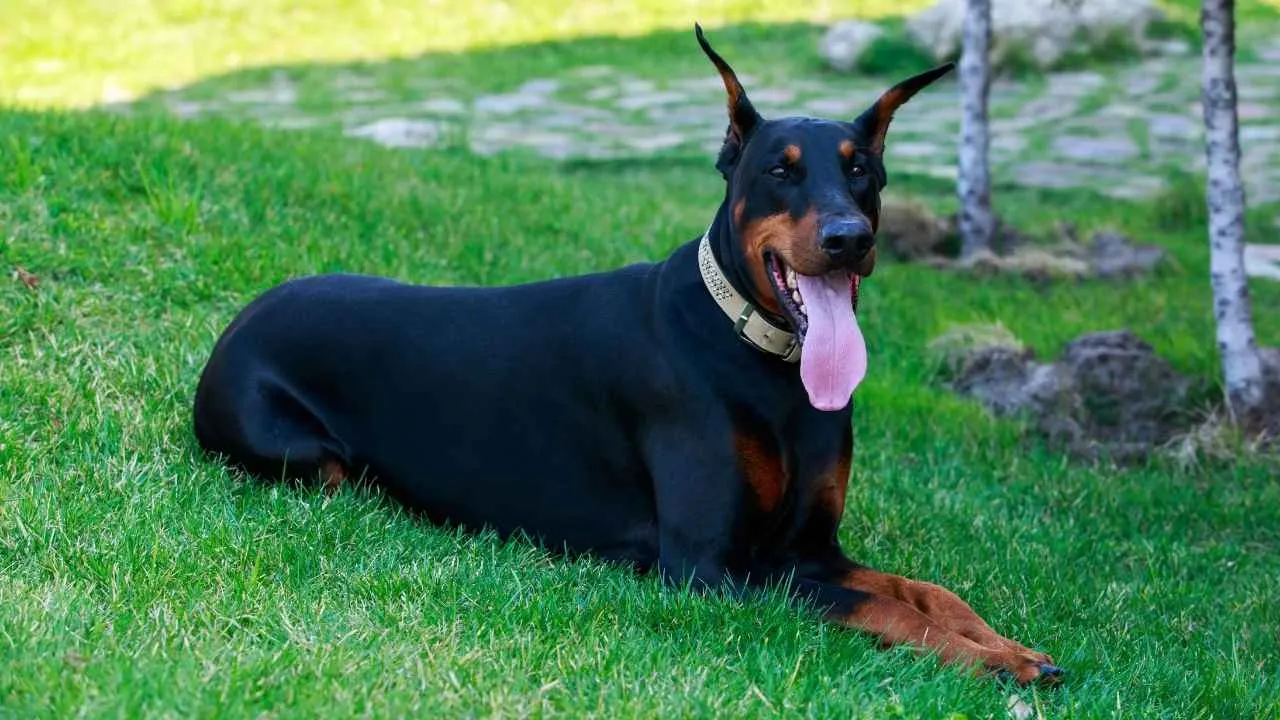
The Doberman Pinscher is an elite, task-oriented breed known for its precision and discipline. Originally bred for security, this highly responsive dog excels in protection work, search-and-rescue, and police tasks. Its intelligence and alertness make it a natural problem solver in high-pressure situations.
This breed’s energy demands consistent outlets through structured activities. Agility courses, advanced obedience drills, and mental challenges keep its sharp mind engaged. Without a defined role, a Doberman may become restless, emphasizing the need for well-planned physical and cognitive exercises.
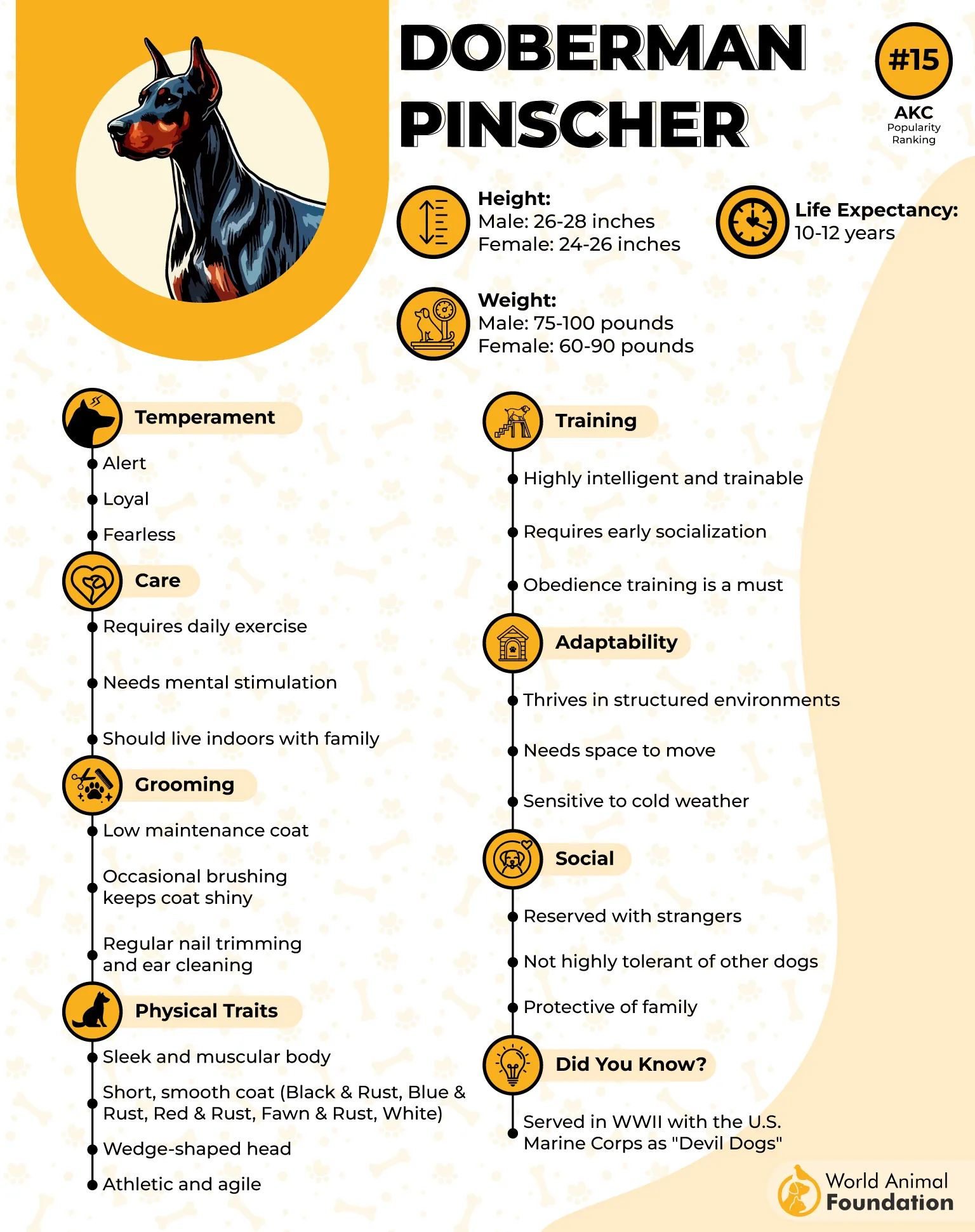
Its powerful frame and sleek coat require minimal grooming but demand regular checkups to maintain peak health. Joint care, muscle conditioning, and weight management are vital for its long-term performance. Proper diet and exercise ensure optimal strength and stamina.
Early socialization plays a key role in shaping a well-balanced Doberman. Exposure to different environments, controlled interactions, and professional training helps develop confidence. While naturally reserved with strangers, proper social development refines judgment and control.
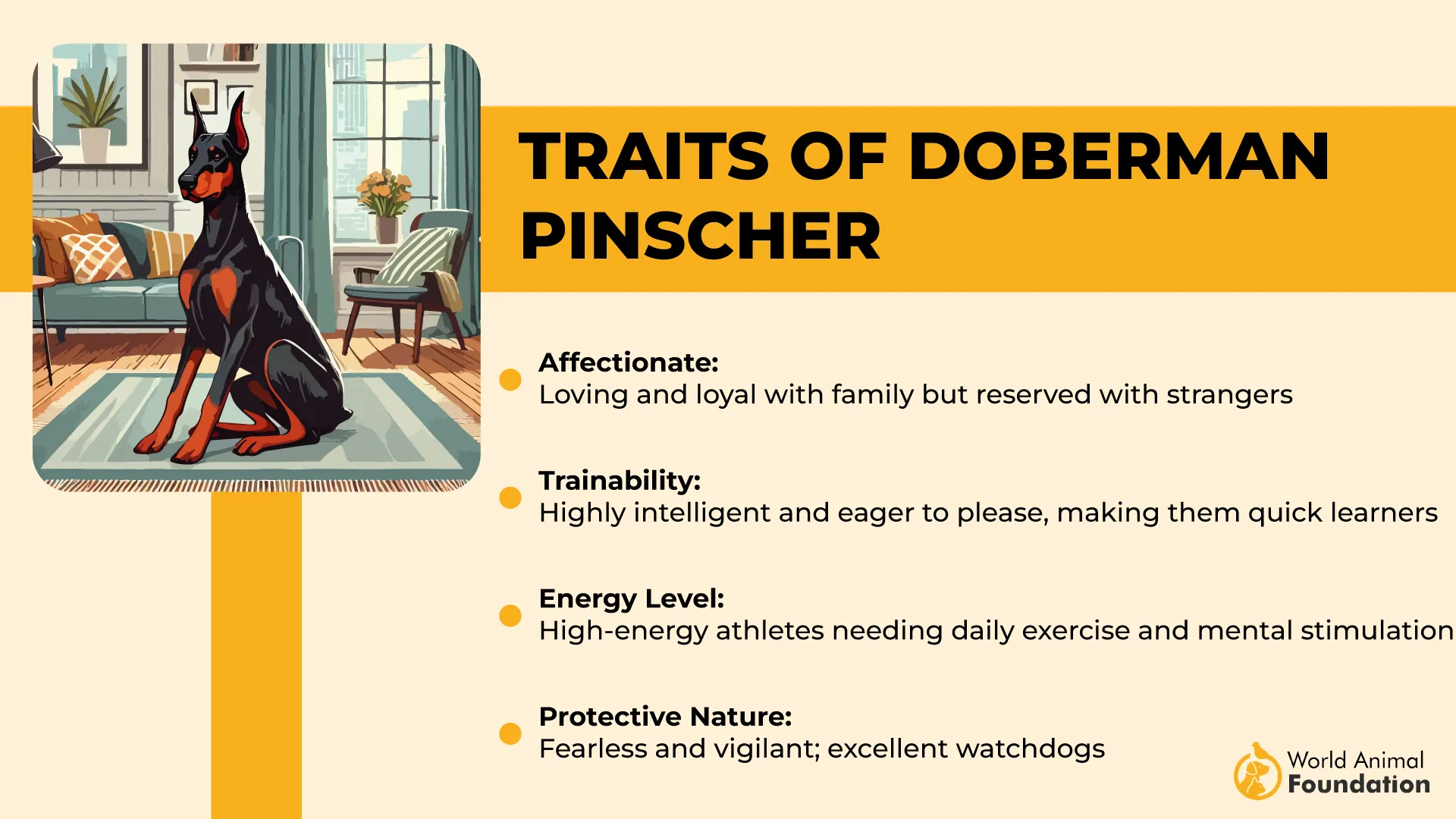
Dobermans have a sharp instinct for reading situations, making them highly effective in security roles. Their ability to detect subtle changes in human behavior and unwavering focus make them a top choice for advanced security operations, law enforcement, and specialized work.
Fun Fact
Dobermans were originally bred by a tax collector named Karl Friedrich Louis Dobermann in the late 19th century. He wanted a fearless yet obedient dog to accompany him on his rounds, ensuring protection in unpredictable situations.
5. Dogue de Bordeaux
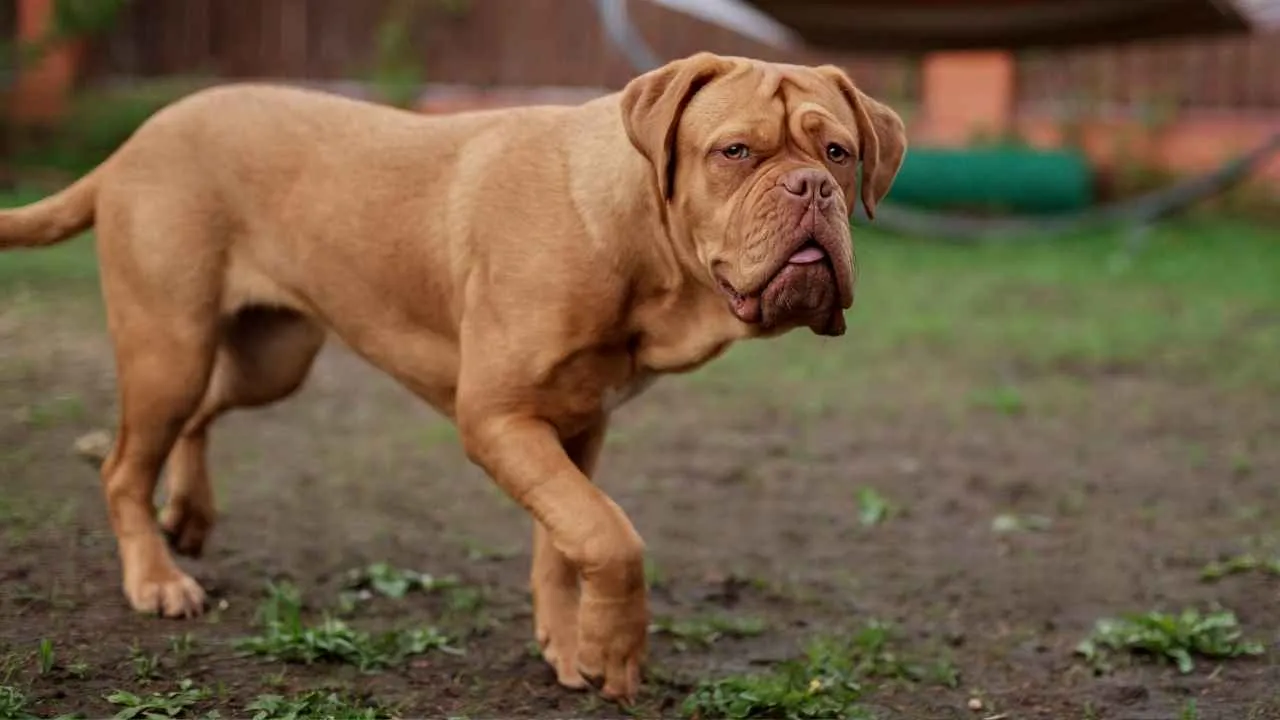
The Dogue de Bordeaux is a powerhouse of determination, originally bred for pulling carts, guarding estates, and assisting hunters. Its unwavering commitment to a task makes it a reliable working dog, excelling in protection, tracking, and endurance-based jobs requiring immense physical strength.
Despite its massive build, this breed has a calm demeanor but thrives on purposeful activities. Endurance training, controlled weight-pulling, and strength-focused exercises maintain its muscular frame. Engaging in mentally stimulating tasks prevents boredom and promotes a balanced temperament.
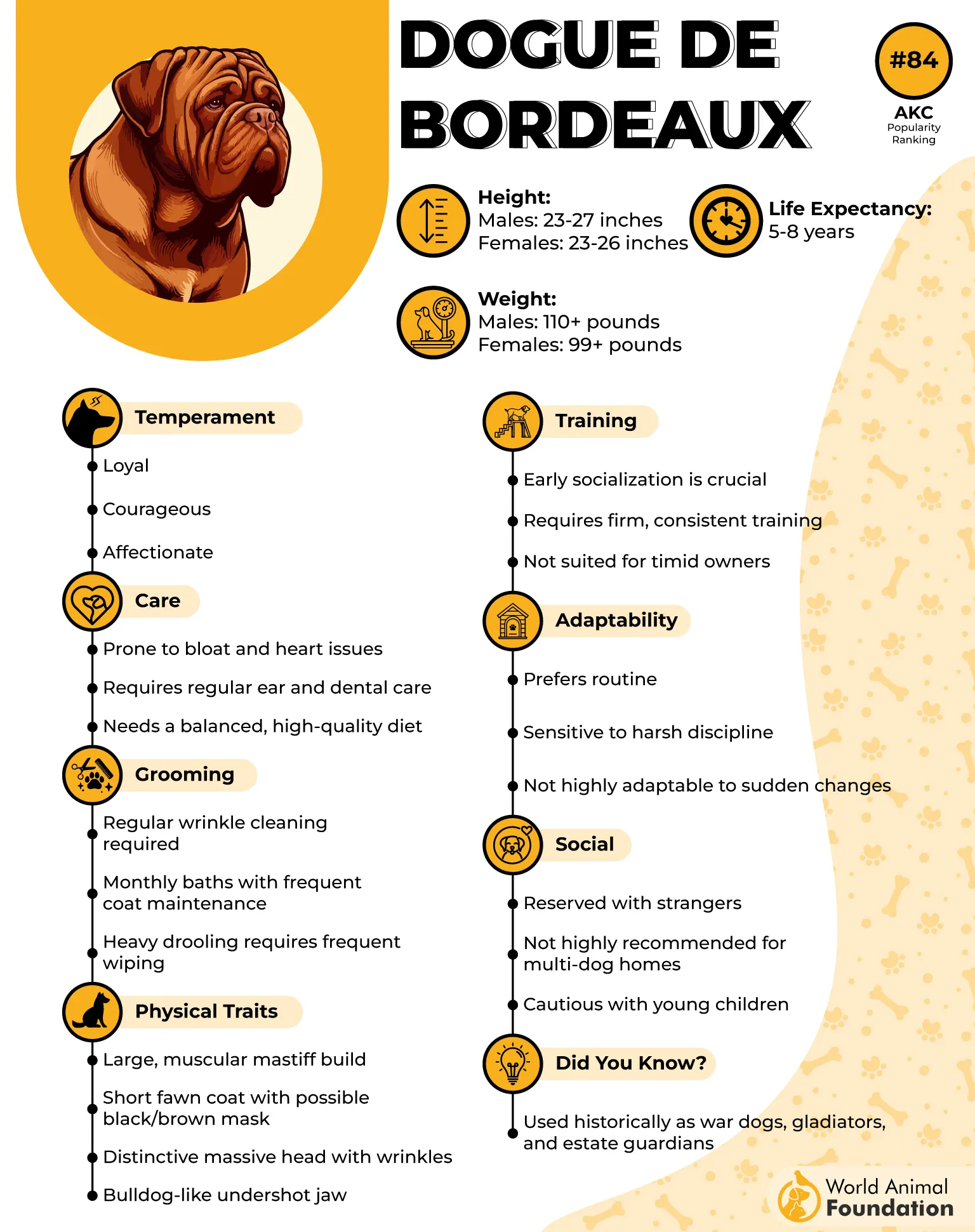
The breed’s signature loose skin and short coat require routine care to prevent infections. Facial wrinkles should be cleaned regularly, while a well-balanced diet supports its heavyset frame. Joint supplements help maintain mobility, especially as the dog ages.
Dogue de Bordeaux forms deep bonds with its household and benefits from structured training. Its natural guarding instincts require firm but fair leadership. Early training enhances decision-making abilities, ensuring controlled reactions in demanding situations.
This breed is historically known for its brute force and has remarkable situational awareness. Whether patrolling large properties or assisting in physical labor, its sheer strength and mental resilience make it indispensable for specialized security and heavy-duty tasks.
Fun Fact
The Dogue de Bordeaux is one of France’s oldest mastiff breeds and was once used to pull heavy loads for butchers. Its immense strength and stamina made it a valuable companion in various physically demanding roles.
6. Great Pyrenees
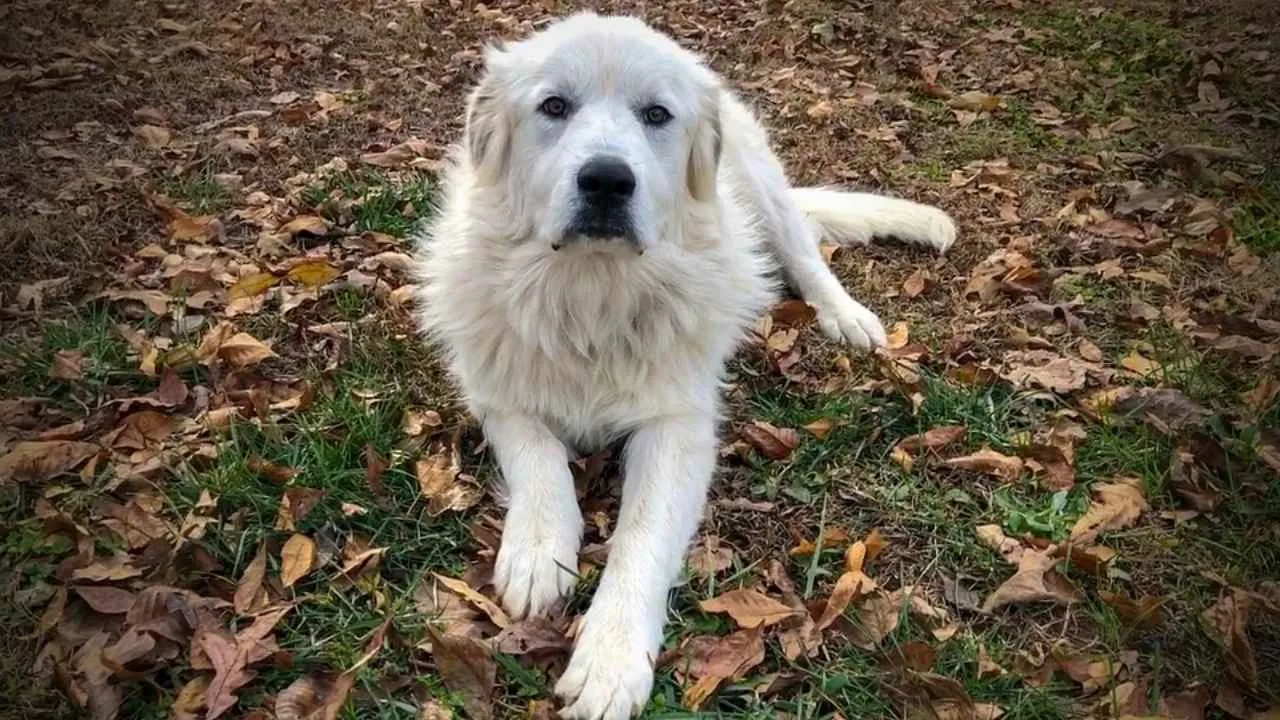
The Great Pyrenees is a task-oriented guardian, bred to protect livestock independently in remote mountain regions. Its strong work ethic and strategic thinking allow it to function autonomously, making it highly effective in safeguarding property, livestock, and expansive rural areas.
This breed thrives in structured environments where its protective instincts are put to good use. Perimeter patrols, livestock management, and even avalanche rescue training align with its natural skill set. Regular exposure to open spaces enhances judgment and responsiveness.
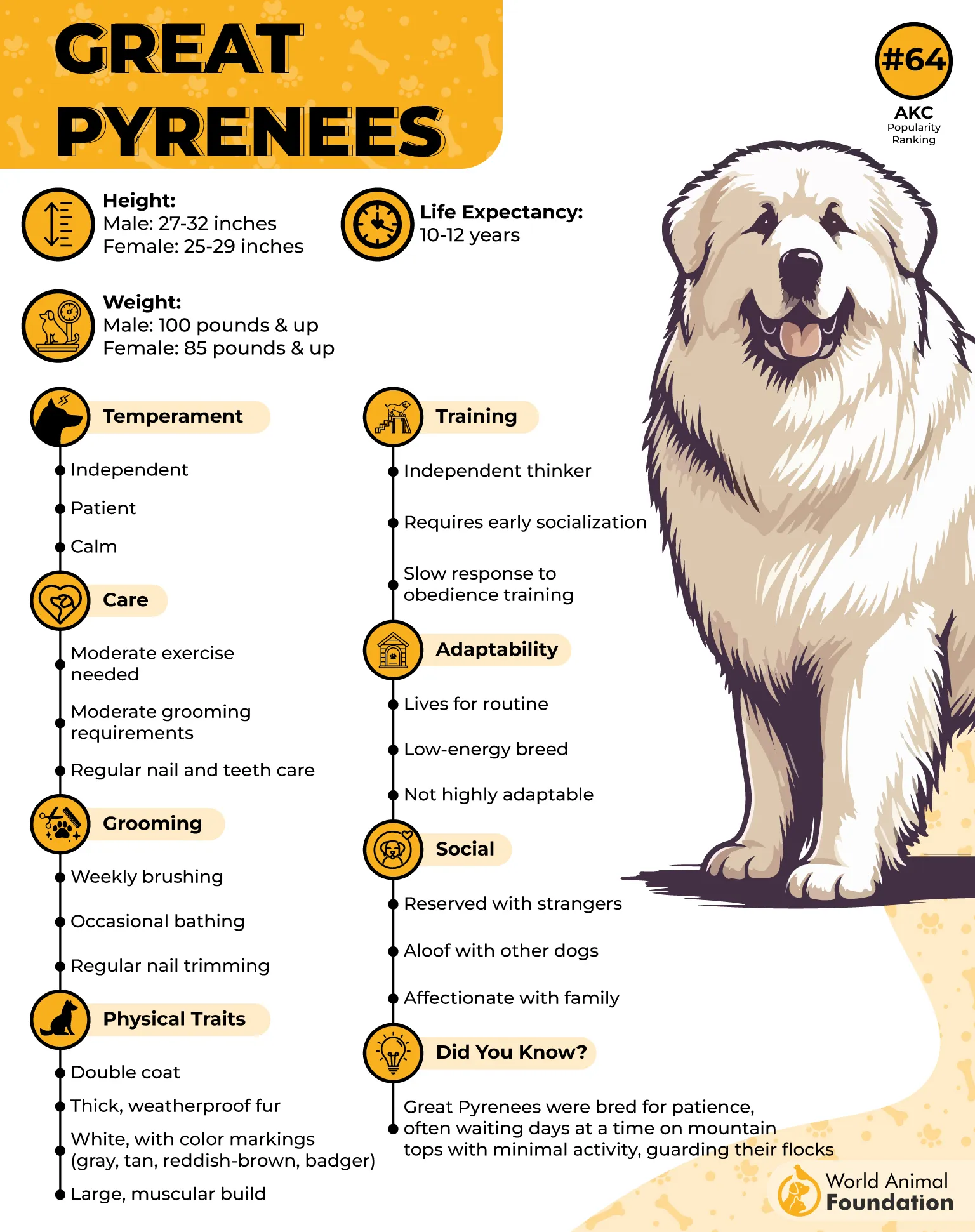
Its thick, weather-resistant coat requires routine maintenance. Brushing removes loose hair and prevents matting, while periodic baths control shedding. Monitoring its diet helps maintain an ideal weight, as excess pounds can strain its joints and hinder mobility.
According to WebMD, training a Great Pyrenees requires patience due to its independent nature. While highly intelligent, it prefers working on its own terms. Command-based training reinforced with real-world applications helps refine its decision-making without diminishing its strong-willed personality.
The Great Pyrenees is known for its silent but assertive presence. It relies on observation and calculated action rather than excessive barking, ensuring a strategic approach to security and protection.
Fun Fact
Great Pyrenees were used by shepherds in the Pyrenees Mountains as nocturnal guardians. Their white coats helped them blend in with the sheep, allowing them to surprise predators attempting to threaten the flock.
7. Rottweiler
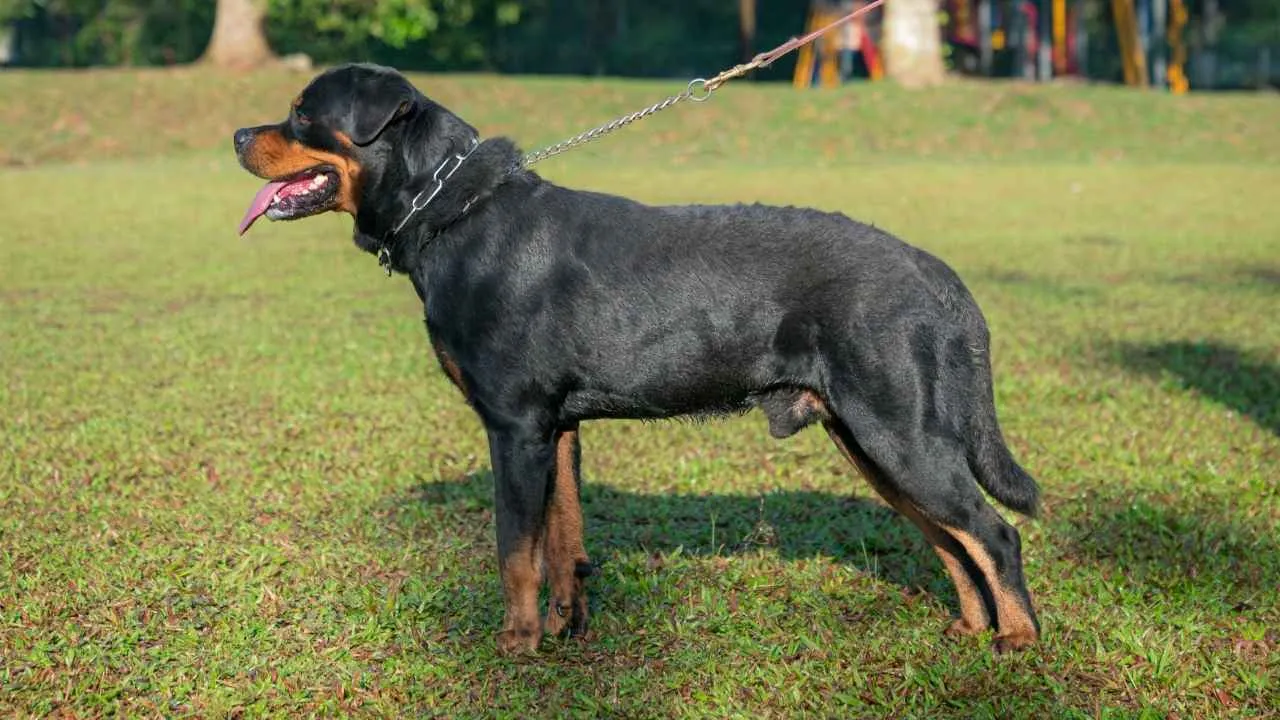
The Rottweiler is a powerhouse of discipline and efficiency, originally bred for herding cattle and guarding property. Its unmatched strength, intelligence, and adaptability make it one of the most capable working dogs, excelling in security, search-and-rescue, and police work.
This breed thrives in environments where it has a structured role. Whether patrolling a property, assisting in protection tasks, or engaging in endurance training, a Rottweiler performs best when given clear responsibilities that challenge both its body and mind.
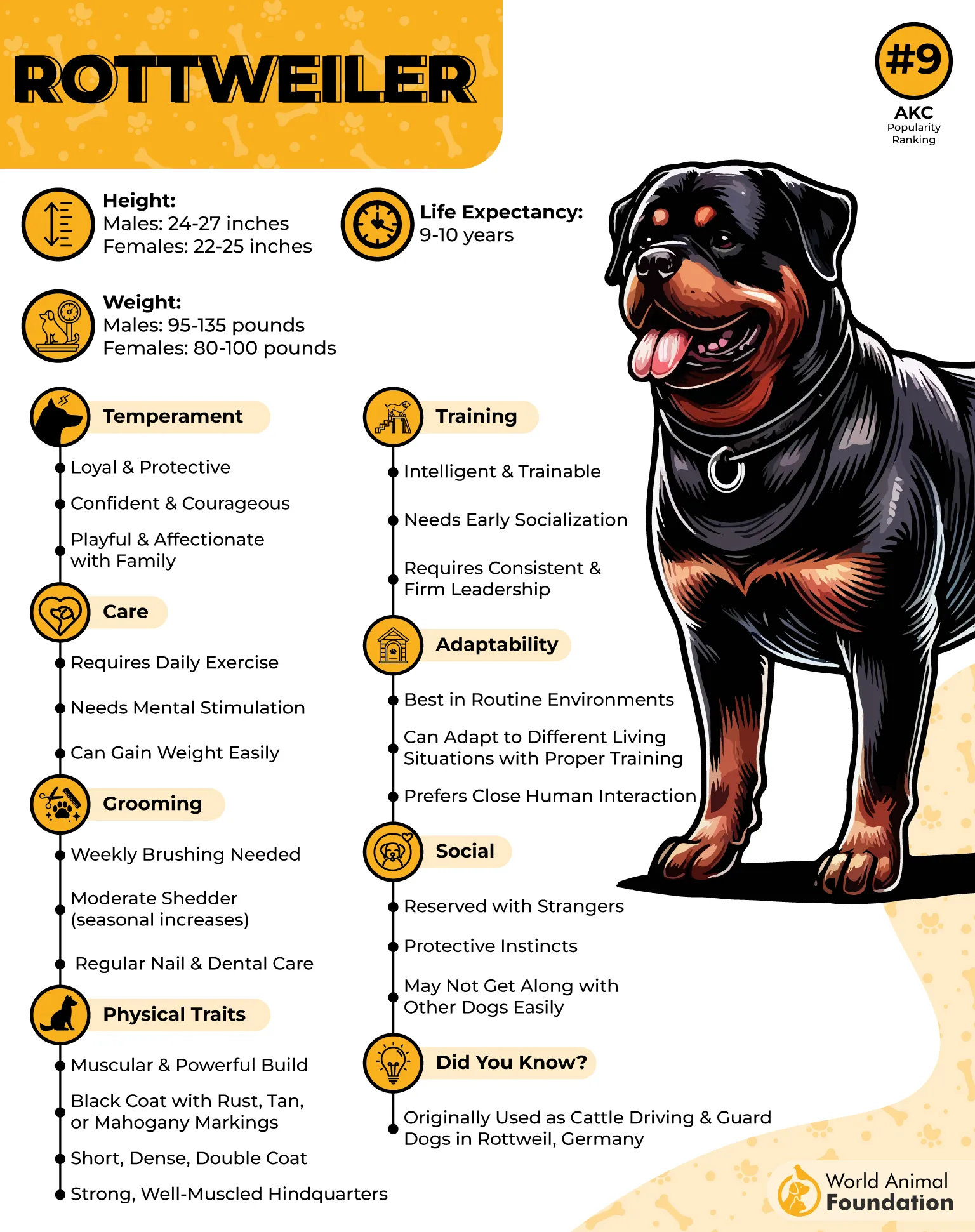
Its dense double coat is low-maintenance but benefits from weekly brushing to control shedding. Regular nail trims and dental care support long-term health. A high-protein diet with proper joint supplements helps maintain its muscular frame and prevent mobility issues.
Firm, consistent training is essential for shaping a well-balanced Rottweiler. It responds well to task-driven exercises that reinforce discipline and focus. Establishing clear boundaries from an early age ensures its natural protective instincts remain controlled and purposeful.
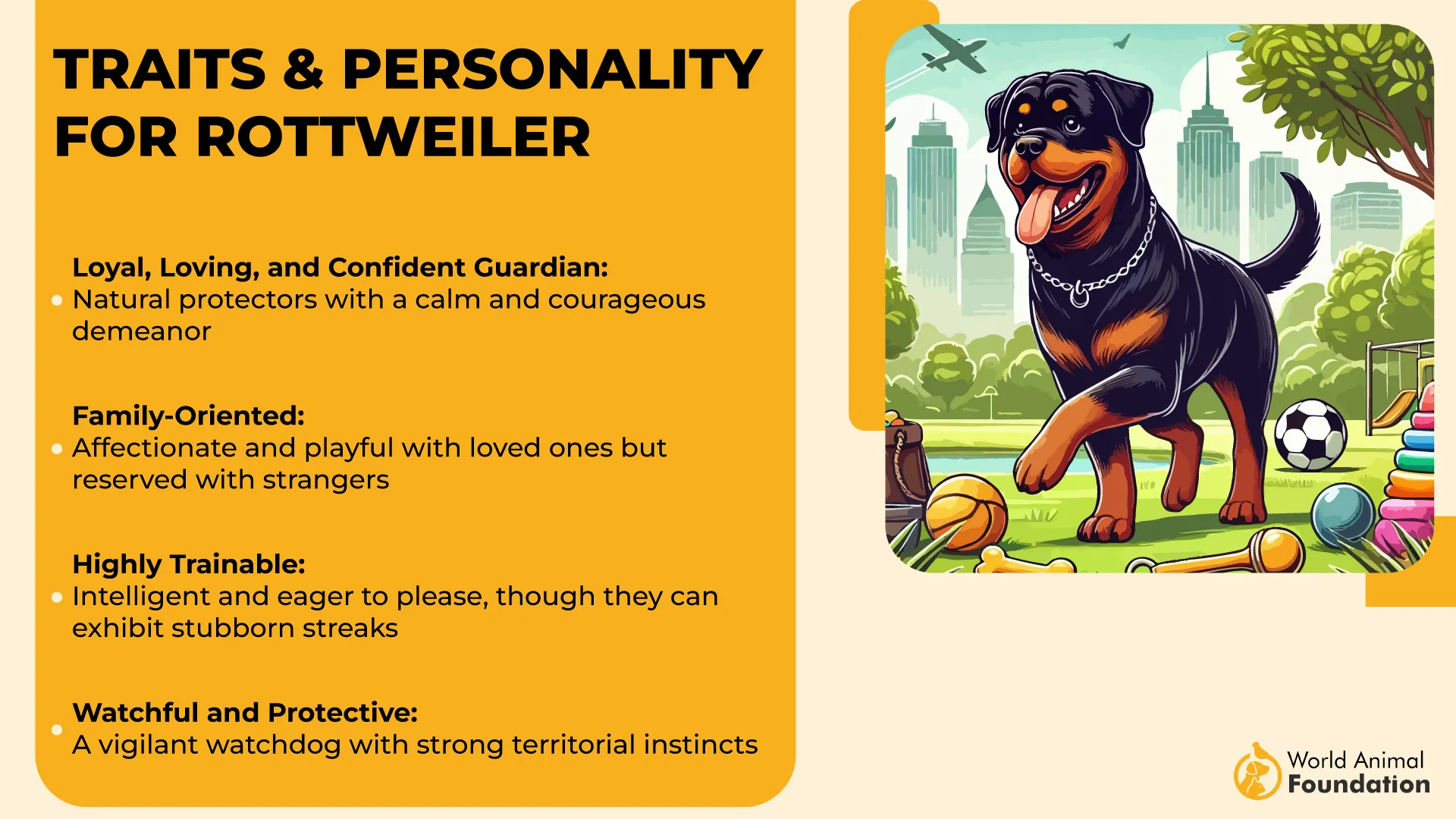
Beyond its physical strength, this breed has an exceptional memory and problem-solving ability. It quickly learns patterns, making it an ideal candidate for advanced roles in law enforcement, personal protection, and specialized security operations requiring split-second decision-making.
Fun Fact
Rottweilers were once known as “Metzgerhunde” or “butcher dogs” in Germany because they were used to pull carts filled with meat to markets. Their endurance and strength made them invaluable working dogs for centuries.
Conclusion
Task-oriented dogs are more than just skilled workers—they are reliable, intelligent, and deeply committed to their roles. Their gentle nature allows them to excel as service dogs, while their instincts, discipline, and training make them invaluable in protection, security, and herding. Each breed brings a unique set of strengths, ensuring they perform with precision in demanding situations.
Owning a task-oriented breed means understanding their needs and providing the right training. These dogs thrive on structure, mental stimulation, and purposeful work. Whether they serve as herding dogs, guard dogs, or specialized workers, they develop into highly dependable partners. Their abilities are not just impressive—they are essential in many real-world scenarios, offering unwavering support to their dog owner.
While many exceptional breeds excel in task-oriented roles, dogs like the German Shepherd, Border Collie, Golden Retriever, Labrador Retriever, and Bernese Mountain Dog have also made remarkable contributions in various working capacities beyond those discussed here.
From guarding homes to assisting in critical missions, these breeds excel where focus and determination are required. Their dedication and skill make them irreplaceable, proving that task-oriented dogs are built for more than companionship.


